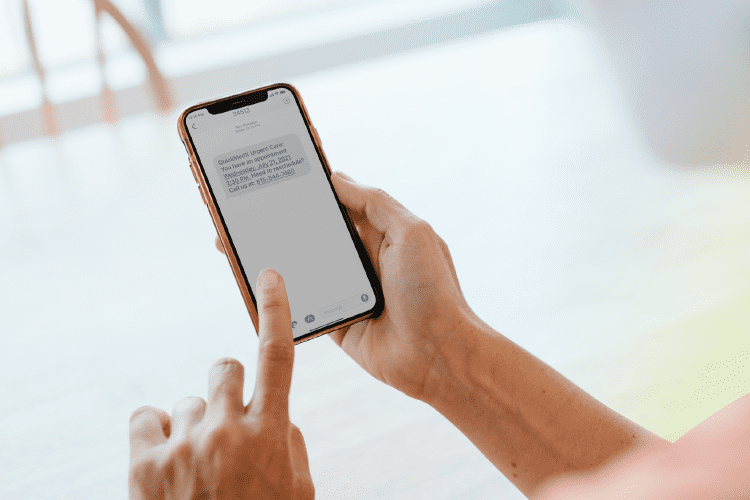Patient Engagement Software Solutions and Technology
Patient engagement technology and software refers to patient-facing tools that make scheduling, communication, and healthcare management remotely accessible. It provides convenience for patients as well as a platform to provide feedback and feel heard.
These solutions offer features that are mutually beneficial for patients and clinics. Typically, they automate all the online conveniences mentioned above, like online registration, reserving a place in line, and more. This technology will also help patient engagement make a greater impact on your bottom line.
How to Improve the Patient Experience with Technology
These are some of the more advanced features that technology has to offer on-demand healthcare.
Online scheduling
Patient engagement (PE) technology has come a long way, providing measurable benefits for patients and staff alike. Allowing patients to reserve and view their spot in line does several things:
- Manages expectations for patients — the wait is more tolerable when they know how long it will be
- Gives patients a sense of control over their care
- Allows patients to choose a clinic with a shorter wait, getting them seen earlier and helping to load-balance your facilities
- Gives staff an accurate sense of volume so they can optimally schedule breaks and know when to ask someone to come in early or stay home
Online registration
You can also let patients fill out their registration information and upload necessary documents like ID and insurance cards. This will drastically reduce check-in time at the clinic, and improve accuracy.
Smart queuing
Similar to making a reservation, getting in a virtual line tremendously helps with wait psychology and wait time. Patients can see the wait in real time and decide whether to choose another clinic, wait at home, or wait in their car. They can even join a line the night before to secure a spot that works well for them the next day. Knowing exactly how long the wait is — and planning when to show up based on that — can give patients a perception of zero wait. This technology gives patients a better experience and gives your staff better visibility into patient volume.
Integrated EMR made for urgent care
While the above comes from PE technology, your EMR should also be saving you steps. But it is most efficient when it is built specifically for urgent care and integrates with your PE and other technology. An EMR that supports the nuances of urgent care will truly help you save time charting, speed up your workflow, improve accuracy, and ultimately — drive revenue.
An Example of the Patient Journey through PE
All of these strategies and benefits may seem great in theory, but what does it look like in real time? Here is a step-by-step example of how the patient journey looks with Experity’s PE tool.
- Patient makes online reservation for the time they want to be seen through the urgent care’s website. Preregistration captures time-saving information, reducing steps once patients arrive at the clinic. The reservation shifts patients away from a “wait time” mentality, letting them wait comfortably at home instead of the parking lot or waiting room.
- Patient will receive a text confirmation of their reservation time. They will also receive a text if the clinic is running behind/delayed, and a reminder text when it’s time to come in.
- Once in clinic, the patient can check in with the front desk or from a check-in kiosk and wait to be seen. A wait room monitor in the lobby displays the patients’ first names in the queue, and time to be called back.
- Staff calls back patient, completes normal visit process, and discharges patient. If the survey product is enabled, the patient will receive a survey text after discharge.
- Clinic can track survey results and respond to online reviews through the reputation management system.




